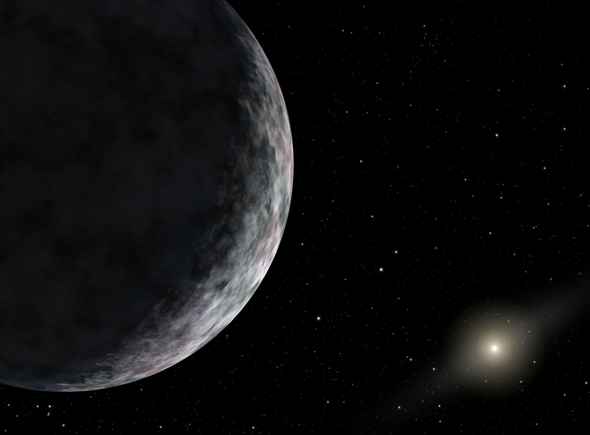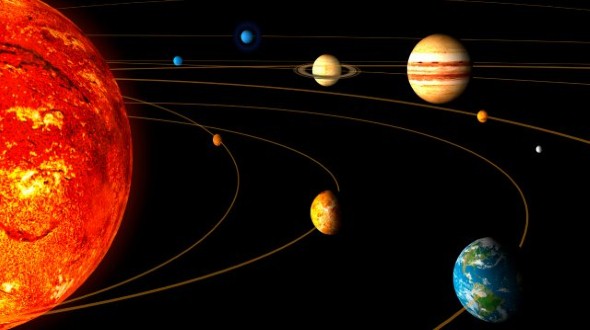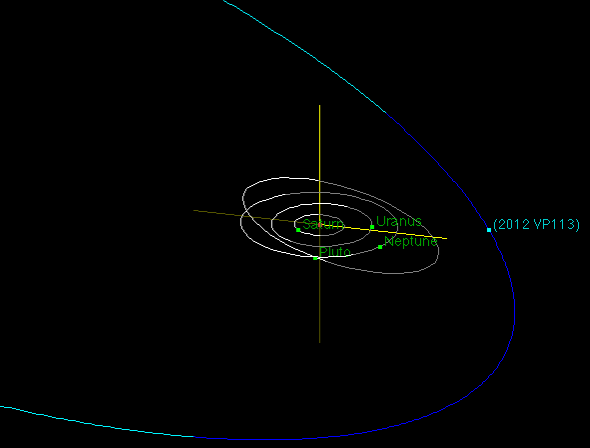The data that we currently have about our solar system have changed after a breakthrough astronomers made and shows a new celestial object in the so-called “inner Oort cloud”.
It is an icy dwarf planet with the provisional name «2012 VP113», which has a diameter of about 450 km. Scientists believe that there is a great chance of finding to find other surprises in the same remote area, even a gigantic ‘ Planet X ‘. A planet which is perhaps ten times the size of the Earth, that is unseen until today as it’s wandering too far from the Sun, but exerts gravitational effects on smaller bodies in the same area as the 2012 VP113. This unknown microscopic planet probably consists mainly of ice (due to the large distance from the sun), has a highly elliptical orbit that brings it at a distance of 80 astronomical units of the Sun on its the nearest point (about 12 billion kilometers) to 452 astronomical units (67 billion miles) in the most remote one (one astronomical unit equals the distance between the Earth and the Sun and it is about 149 million km).

Specifically, the «2012 VP113 needs several thousand earth years to make a complete orbit around the Sun. To date, only one more object was discovered in 2003 beyond the orbit of Pluto, Sedna, with a diameter of about 1000 km. The «2012 VP113» is even farther away, which makes it now the most distant known celestial object in our solar system.

Indeed, astronomers believe that Sedna and “2012 VP113” are simply the “tip of the iceberg “, as a large number of objects still remain to be discovered, of which about 1,000 are at least the same as Sedna. In fact, many of them are sufficiently larger than Pluto, Mars and possibly Earth. They are too distant though and it is therefore difficult to identify them. The ” Planet X ” (if there is any) may be located at a distance of 250 astronomical units from the Sun. The discovery, led by Scott Sheppard of the Carnegie Institute, was made by two telescopes in Chile and the relevant scientific publication was in the «Nature» magazine, according to the BBC, the Reuters agency and the «New Scientist».

The region of space after the last major planet in the solar system, Neptune, is called “Kuiper belt” (its most famous celestial object is Pluto). Even further, there is the much larger and icy region ” Oort Cloud”, which probably – except from a plethora of comets – hosts many yet unknown celestial objects. Once, Pluto was considered the most distant planetary object, then Sedna won the title and now we have «2012 VP113», for which the International Astronomical Union is working on giving it a better name.



